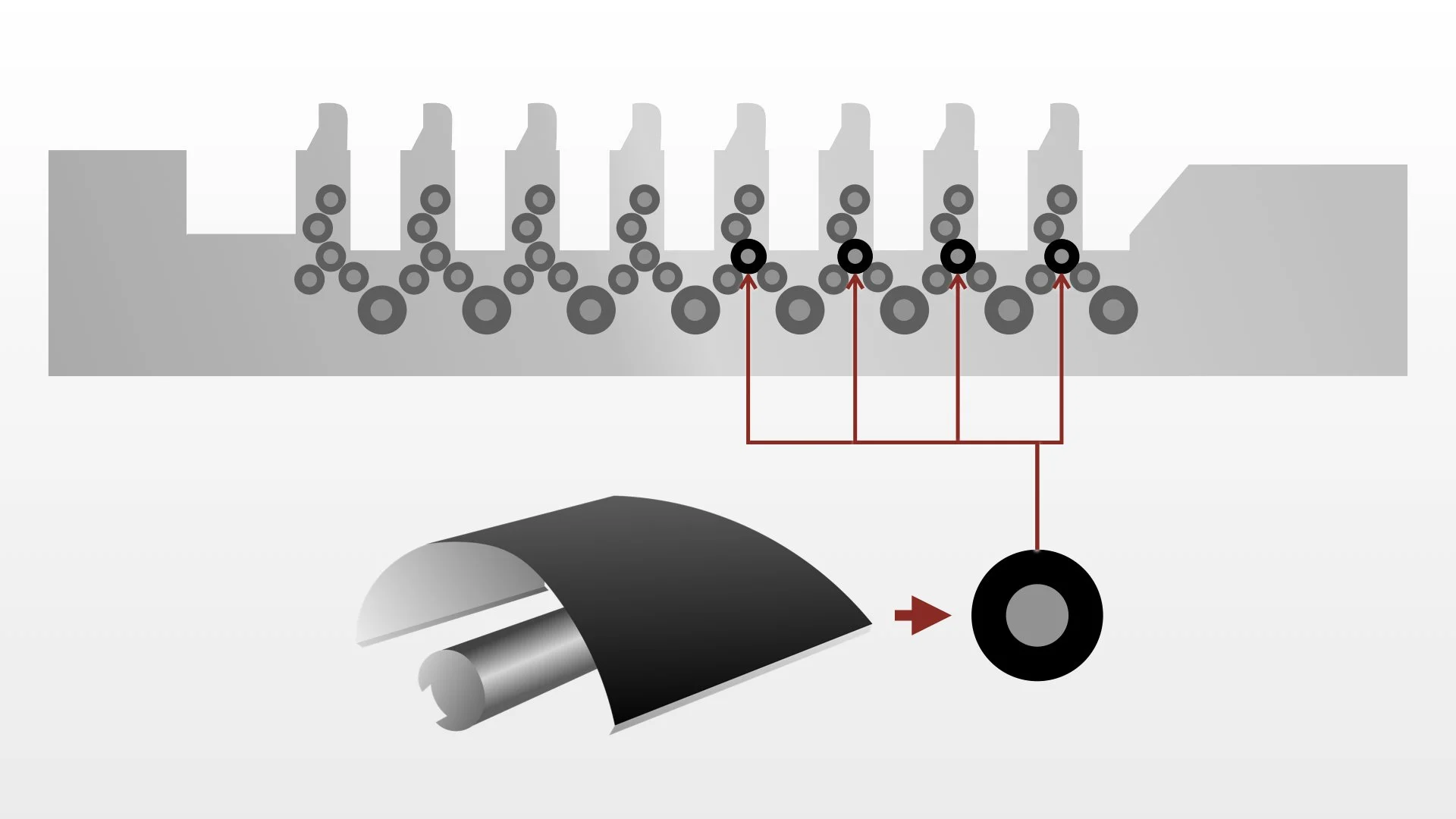In offset printing, maintaining your equipment is key to producing high-quality prints, especially when printing both sides of a sheet (perfecting). One crucial component often overlooked is the cylinder jacket. These jackets on your impression and transfer cylinders are essential for ensuring smooth, accurate printing, but over time, they can wear out and start causing problems.
We always recommend LMC Jackets as the best option for your press, with quality you can trust, savings you can count on.
Explore LMC Jackets
Here are seven common issues that indicate it might be time to change your cylinder jackets.
1. Back Staining (Setoff)
If you notice that ink from the first side of the sheet is transferring onto the reverse side during perfecting, this is known as back staining or setoff. This issue often occurs when the cylinder jacket’s coating loses its hydrophobic and oleophobic properties (water and oil resistence), or if it’s become dirty or worn.
When back staining starts to become a regular problem, it’s a clear sign that your cylinder jackets need attention or replacement.
2. Dot Gain or Loss of Reproducibility
When your printed dots on the reverse side start to appear larger or lose their sharpness, you’re dealing with dot gain or loss of reproducibility.
This issue can arise if the impression cylinder jacket isn’t providing a consistent surface, leading to uneven pressure distribution. A worn, damaged, or poorly installed jacket can affect the precision of your prints, making it difficult to achieve the high-quality output your clients expect.
3. Scratching or Scuffing
Visible scratches or scuff marks on the second side of your printed sheets are a major red flag.
Rough or damaged cylinder jackets can cause these physical defects, damaging the paper surface during printing. Regular maintenance and using the correct cleaning agents are crucial, but if scratches persist, it’s likely time to replace the jacket.
4. Inconsistent Ink Transfer
Inconsistent or patchy ink coverage on the reverse side of the sheet can ruin a print job. This often happens when the cylinder jacket is uneven or contaminated, causing irregular pressure across the sheet.
If you’re experiencing uneven ink transfer, check your jackets for signs of wear or improper installation.
5. Poor Registration
Misalignment between the images printed on the front and back sides of the sheet—known as poor registration—is another common issue linked to cylinder jackets. If the jacket is poorly aligned, stretched, or deformed, it can throw off the accuracy of sheet feeding and registration, leading to frustrating misalignment issues.
6. Ghosting
Ghosting occurs when a faint image from the first side reappears on the second side of the sheet. This can happen if the ink on the first side isn’t properly absorbed or dried, and the cylinder jacket inadvertently picks up and re-deposits the ink on the second side.
If ghosting becomes a regular issue, your cylinder jackets may be the culprit.
7. Paper Slippage
Paper slippage during printing can cause misregistration or smudging, leading to wasted materials and time.
Worn or slick cylinder jackets may fail to grip the sheets properly, allowing them to slip during transfer between cylinders. If slippage is causing production headaches, inspect your jackets and consider replacing them.
Conclusion
Cylinder jackets play a crucial role in the quality and efficiency of your offset printing process. If you’re experiencing any of these issues, it’s may be time to assess the condition of your jackets and replace them if necessary.
Regular maintenance and timely replacement of worn-out jackets can save you from costly reprints and keep your printing operation running smoothly.





